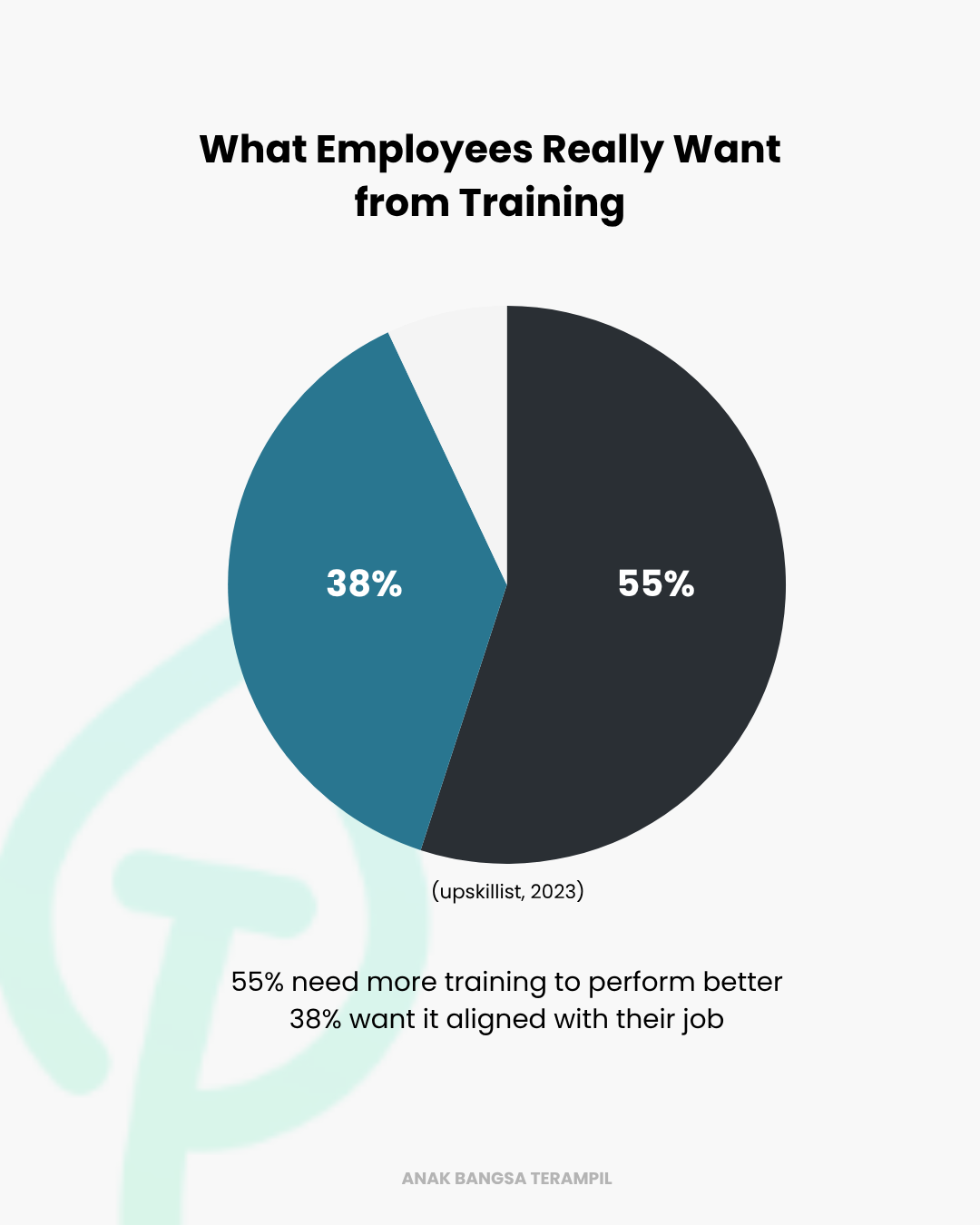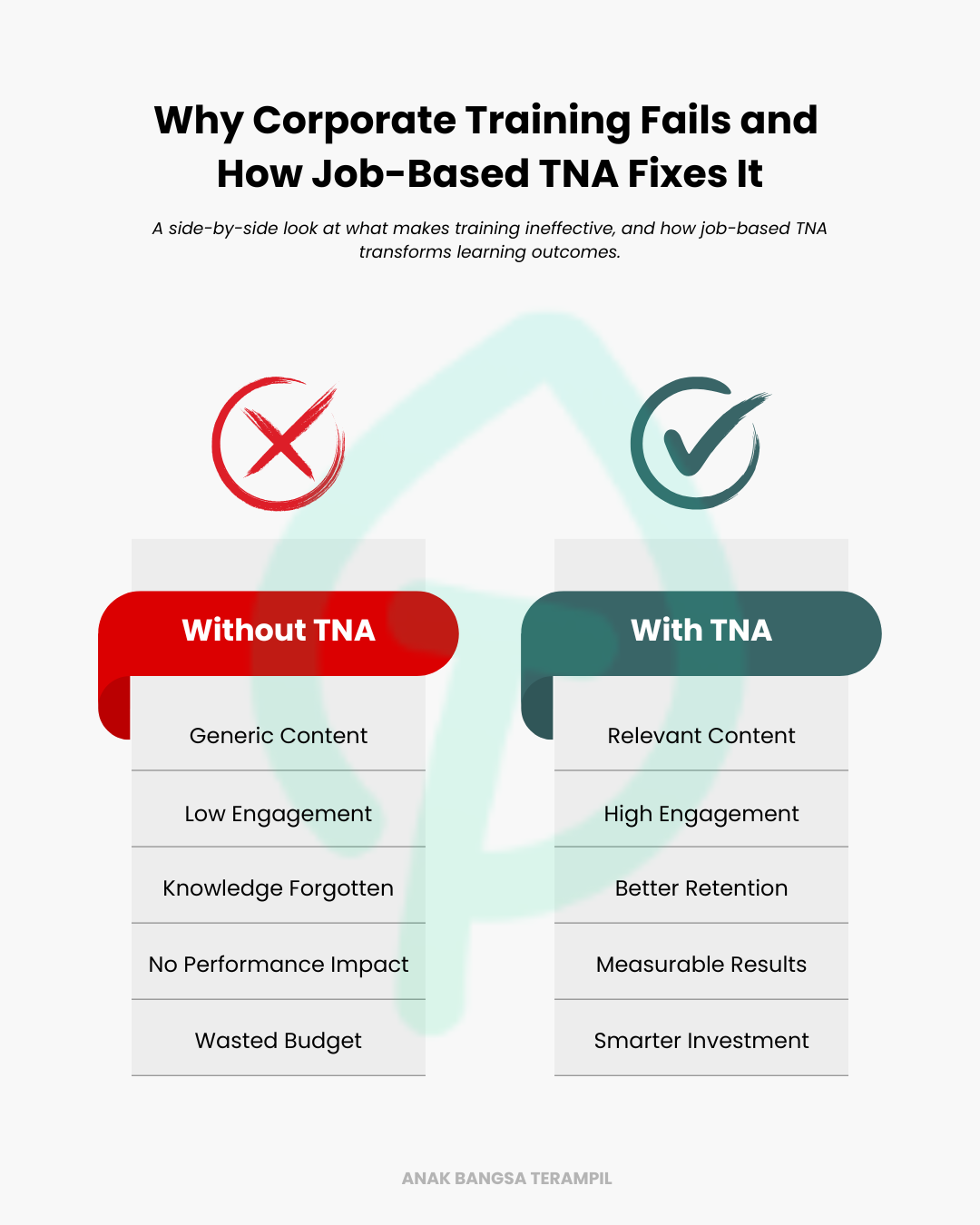Imagine spending thousands on employee training, only for most participants to forget 70 % of it within a week, and apply less than 10 % to their day-to-day tasks.
Alarming? Absolutely.
Many companies still rely on generic training modules, one-size-fits-all sessions that ignore individual roles and real-world job demands. The result?
- Low engagement
- Poor knowledge retention
- No measurable ROI
These are clear signs that your training isn’t doing what it should: developing talent and supporting business goals. It’s time to examine the root cause—a lack of relevance and personalization.
The workforce has changed. Modern employees (especially Gen Y and Z), expect training that is on-demand, relevant, and directly applicable. They’re not satisfied with generic lectures; they want content tied to their actual roles and career paths.
Training linked to real job responsibilities boosts engagement and knowledge retention, and most importantly, helps employees perform better. Harvard Business Review notes that high-performing organizations tie learning outcomes to strategic KPIs, not just course completions.
What Is TNA and Why It’s a Game-Changer
Training Needs Analysis (TNA) is the systematic process of identifying the gap between current skills and what the business requires. When conducted per role or even per employee, it becomes the foundation for building training that is purposeful and relevant.
The Power of Mapping Needs by Role and Individual
According to Upskillist, 55% of employees say they need more training to improve performance—but 38% insist that training must align with their actual job roles. A job-based TNA approach ensures that each employee receives tailored development, solving specific performance gaps rather than delivering broad, unfocused learning.

As the comparison below illustrates, job-based TNA addresses the root causes of ineffective training— replacing generic approaches with high-impact, relevant learning.
Let’s break it down.

Here’s how Anak Bangsa Terampil’s Enterprise Learning Suite bridges the gap between abstract TNA and real-world training impact:
End-to-End TNA for Every Job Profile
We design TNA frameworks per job role and even tailor them per employee, delivering actionable insights into specific skill gaps and learning needs.
Integration with LMS and Learning Strategy
TNA isn’t a standalone activity. Its outputs feed directly into your LMS and enterprise learning strategy, ensuring learning paths are role-aligned and results are trackable through your existing systems (e.g., the
Enterprise Learning Suite).
Expert Collaboration and Custom Learning Design
Working alongside Subject Matter Experts (SMEs), we co-create learning content: custom videos, on-demand modules, and practical exercises—all rooted in real job contexts, not abstract theories.
Corporate training doesn’t have to be a guessing game. With job-based training needs analysis, you uncover true skill gaps and create learning experiences that employees remember and apply. You stop wasting time and budget on generic programs, and start investing in personalized employee training that drives engagement, performance, and ROI.
Prefer to explore on your own?
Talk to our
Sales Team to find tailored corporate training solutions for your team.



